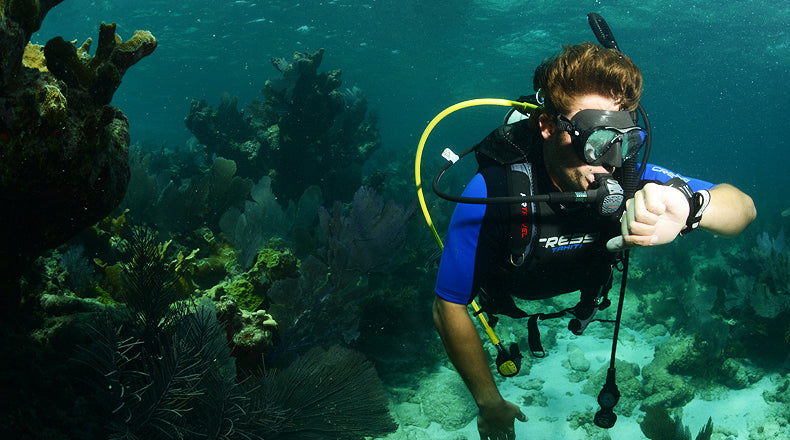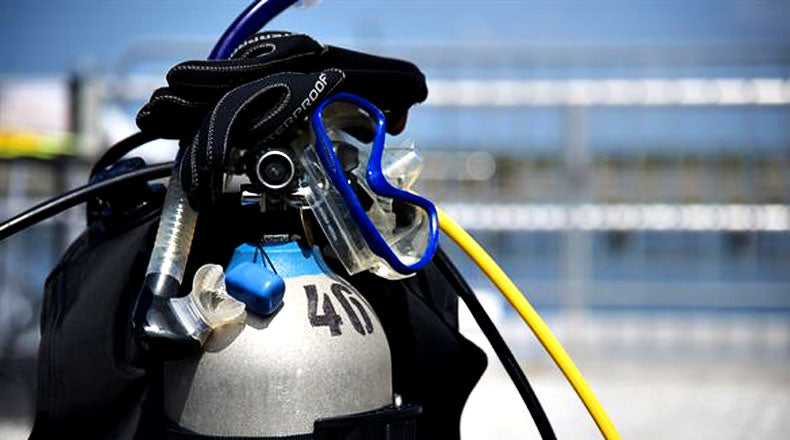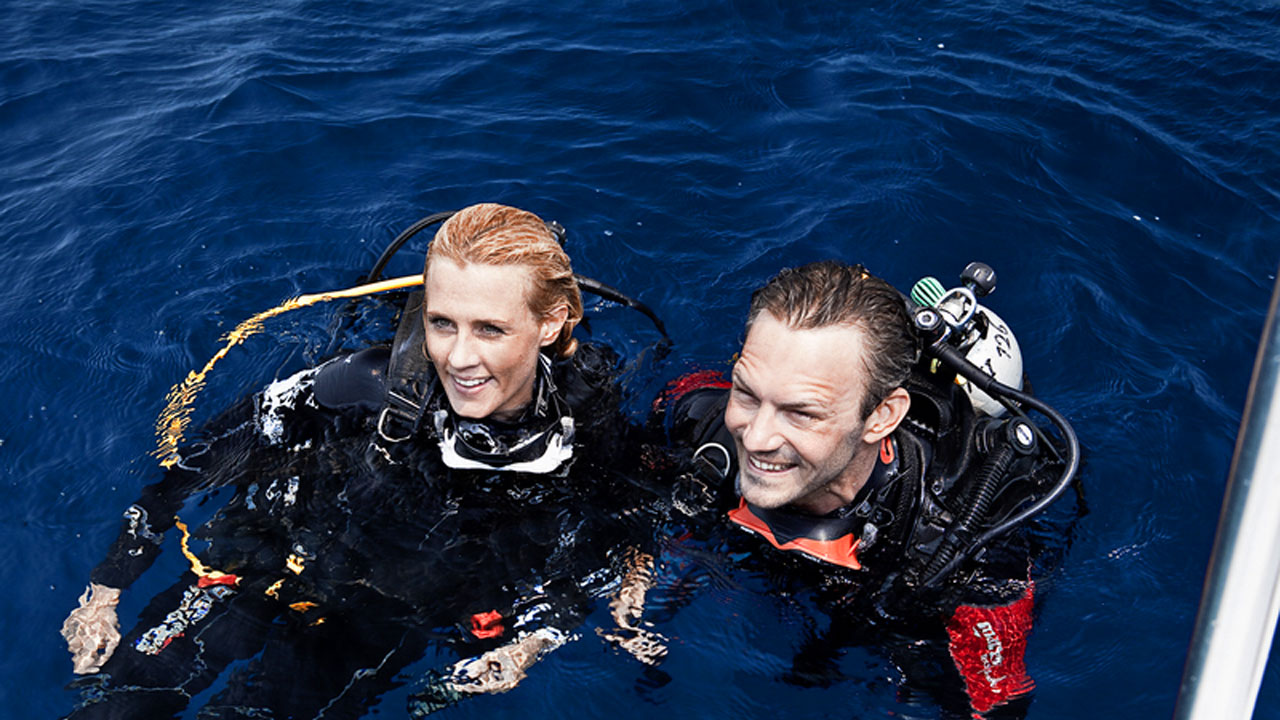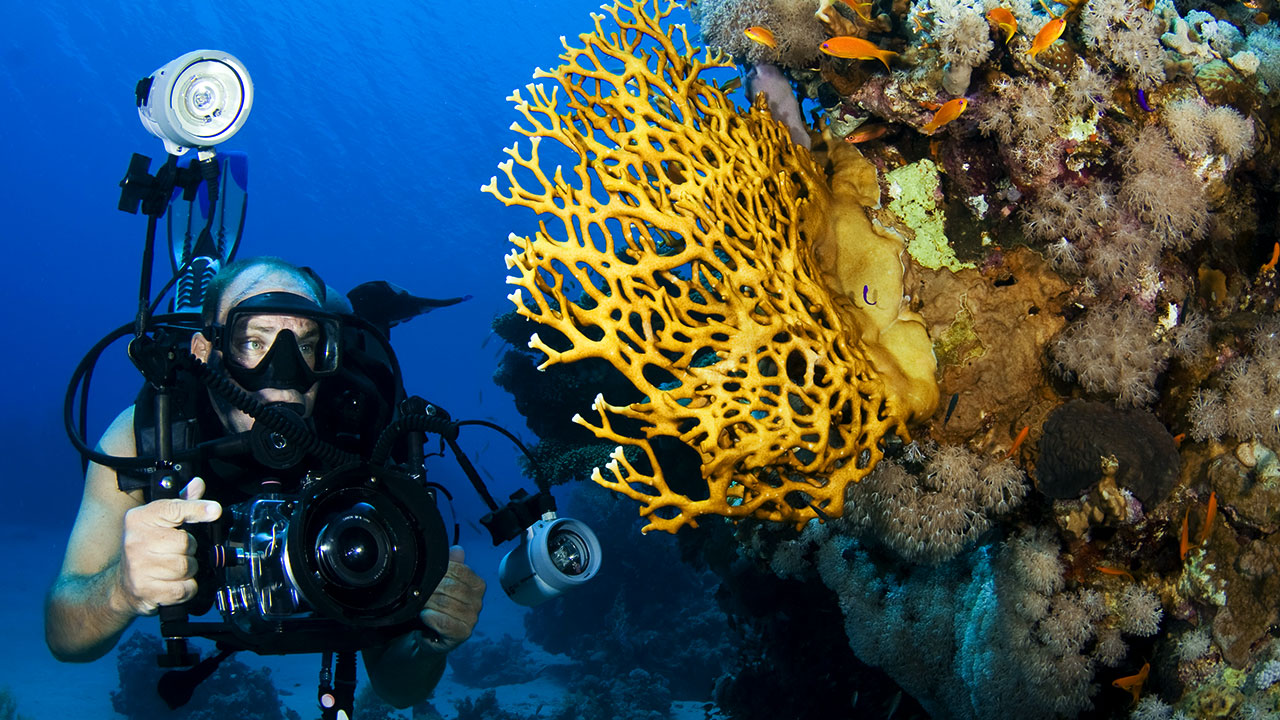Scuba Skills: How to Plan a Dive

Ever seen a diver in a movie? Here is how it looks most of the time - a diver (often wearing the wrong equipment) simply steps to the edge of a boat and jumps into the water. No planning, no prep. Cue the music. Of course, we can’t expect Hollywood to show us every intricate detail of a scuba dive, but these scenes present a skewed image of diving.
In real life, smart divers look before they leap.
Long before a diver - experienced or not - places so much as the edge of a fin in the water, a great deal of preparation needs to take place. In some ways, dive planning is the foundation on which an entire dive is built. The wrong planning means a shaky foundation and a bad or even tragic experience. A good plan, on the other hand, helps you stay safe and enjoy the dive to the fullest. To create such a plan you should have more than just a general idea of where you are going. Here are some of the elements that should be included in a good dive plan.
1. Dive site
If you don’t have a specific dive site you would like to visit in mind, a good place to start is to figure out the general goals of your dive. For instance, you may decide: “I want to travel somewhere exotic and try wall diving.” Then, you can research the best destinations for the chosen type of diving. On this stage, you should also consider the time of the year you plan to make your trip.
Once you work out the location you will be traveling to, you should check the weather and environmental conditions on site. Consider tides, currents, water temperature, visibility and bottom composition. Tides can affect the depth and accessibility of the dive site. Water temperature dictates the choice of exposure suit you will need to wear. Bottom contours and composition have a dramatic effect on the site's visibility, depth range, and diversity of life. Knowing all of this will help you determine and plan for potential hazards unique to the chosen dive site. Ultimately, the more you know about your dive, the better prepared you are. If you need to, get some expert advice and additional training before diving that site.
2. Maximum depth and duration
Nowadays, having sophisticated dive computers, many divers choose to simply put one on, plop in the water, dive to a depth that suits them, and bubble around until the computer tells them to resurface. However, we always insist that it is best to plan ahead and use a computer in conjunction with any form of recreational dive planner to calculate your personal bottom time and depth limits. Although modern dive computers are very reliable, you should not lose your mastery of the basics. A computer should serve as an extra level of safety, not a substitute for getting it right.
Another thing you should think about when planning a dive is your air consumption. Failing to think about how you use air can lead to a situation when you, for example, plan a 50-minute dive, but then unexpectedly empty your tank in 40 minutes, and end up needing to perform an emergency ascent.
Calculating Air Consumption: Infographic With Hands-On Examples
Read how to calculate your air consumption here.
Don’t we all want our dives to last as long as possible? Well, the key to achieving this is understanding and improving various factors that determine the duration of each particular dive. While there are many aspects to consider, today we are going to talk about one of the most crucial influences - your air consumption rate.
Knowing your surface consumption rate will allow you to calculate how much air you’ll need to bring on any given dive in order to make it back with a bit to spare.
Remember, even if you are diving with a dive guide, you should still have your individual dive plan. A dive guide may take your certification limit into consideration while briefing you on your general dive plan, but only you know your real personal limits, so, it is up to you to take responsibility for your own safety.
3. Equipment
It is vital to carefully plan scuba equipment needs before making a dive. Equipment will vary depending on your dive type (night, cave, ice, current, etc.) and the planning you have done ahead of time. If you are making a shallow dive on a balmy day in an exotic location, you probably only need standard dive equipment. On the other hand, if you’re facing cold temperatures, strong tides and currents or poor visibility, you may need a drysuit, reels, lines, a redundant air source, lights, and some equipment that will help you navigate. Specialty training will teach you the complete checklist for each type of diving.
In addition to that, you should make sure that all your equipment is ready for underwater performance. When was it last maintained? Is everything working properly?
Pre-Dive Equipment Check and Setup Guide
Here is your guide on equipment check and assembly.
When you are about to dive underwater, your scuba gear is your life support, and having it properly setup is key to a safe and comfortable dive. Therefore, your pre-dive preparation and especially the equipment check shouldn’t be taken lightly. In case there are any equipment issues, it is important that you discover them before getting into the water.
How Often Should You Have Your Scuba Gear Serviced
Here are a few things you should know about scuba gear servicing.
Every responsible diver should understand the importance of proper scuba gear maintenance. As a regular user, you should take your time to visually inspect, clean and perform any other necessary steps for pre- and post-dive care of all the pieces of your setup. However, another crucial part of your equipment care is a timely inspection and service by an authorized technician. Not only will it greatly prolong the life of your dive equipment, but it is also one of the best insurance policies for staying safe while diving. So, do you know how often you should have your gear serviced? Let’s try to answer this question in the following article.
4. Emergency Procedures
It is extremely important for every diver to have an emergency plan. Be it a minor issue, such as a broken fin strap, or a more serious problem, you should be ready to face it.
Refresh your knowledge on how to act in case you need to perform an emergency ascent, surface away from the boat or get separated from your buddy.
Develop a written list of facilities and emergency resources in the area, including hospitals and clinics, search-and-rescue providers and transportation or evacuation services, hyperbaric chambers and health insurance companies of participating divers.
Have a well-stocked first aid kit and inspect its contents before your dive trip to ensure nothing is missing, damaged or expired.
Put together a small save-a-dive kit to be able to make emergency gear repairs on site if something fails. Your kit should include such key items as spare O-rings in varying sizes, fin straps, mask straps, dive computer batteries, a few wire strips for attaching gear, some duct tape, etc.
5. Self-evaluation
Evaluating your level of preparedness for a dive is important. You may know your goals and have the right equipment. You may even have carefully researched the environment. However, if you are not fit to dive, all of that will not matter. To determine your fitness for a dive, consider your physical health, level of fatigue, stress, medications, and alcohol consumption. If you are ill - even with “just” a common cold - and require medication, you should wait until you are better before diving. Even minor congestion can create respiratory system issues which can make a dive dangerous. If you have consumed any alcohol or are tired, you should not dive. You will need to be able to focus clearly and make important decisions on your dive, and you can’t make great decisions if your judgment is impaired by controlled substances or fatigue. While stress is hard to gauge, it is important to consider your level of mental as well as physical preparedness. If you are under stress, you may simply be too distracted to dive.
6. Buddy evaluation
In addition to checking your own preparedness, you will want to check the preparedness level of your buddy or companions. Is everyone fit to dive? Does everyone have adequate scuba diving training? Does everyone have the right equipment? If the answer is “no,” postpone the dive until everyone is fit.Last but not least, remember, having a good dive plan is important, but you should also be flexible and ready to adjust your plan in case conditions change.







